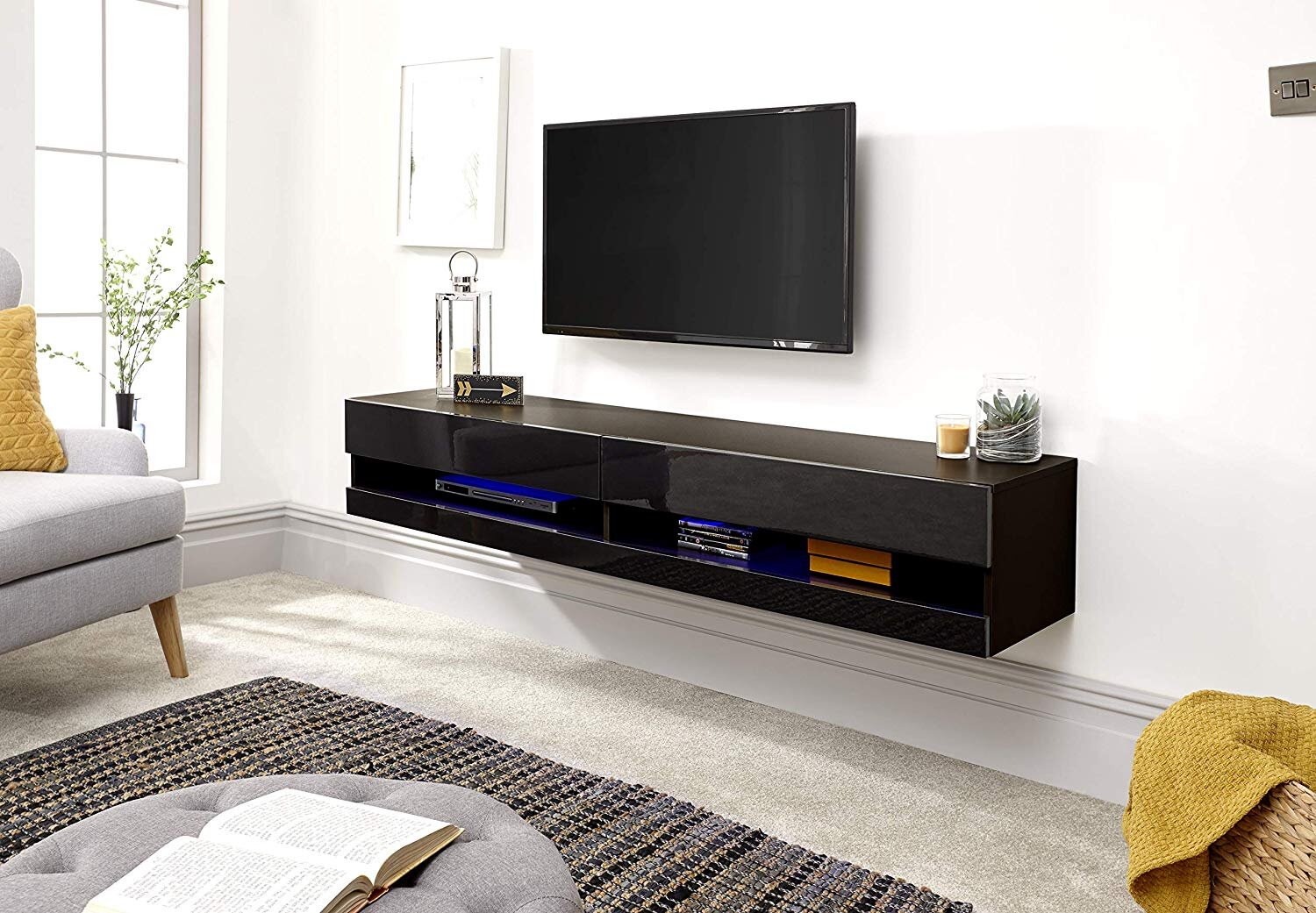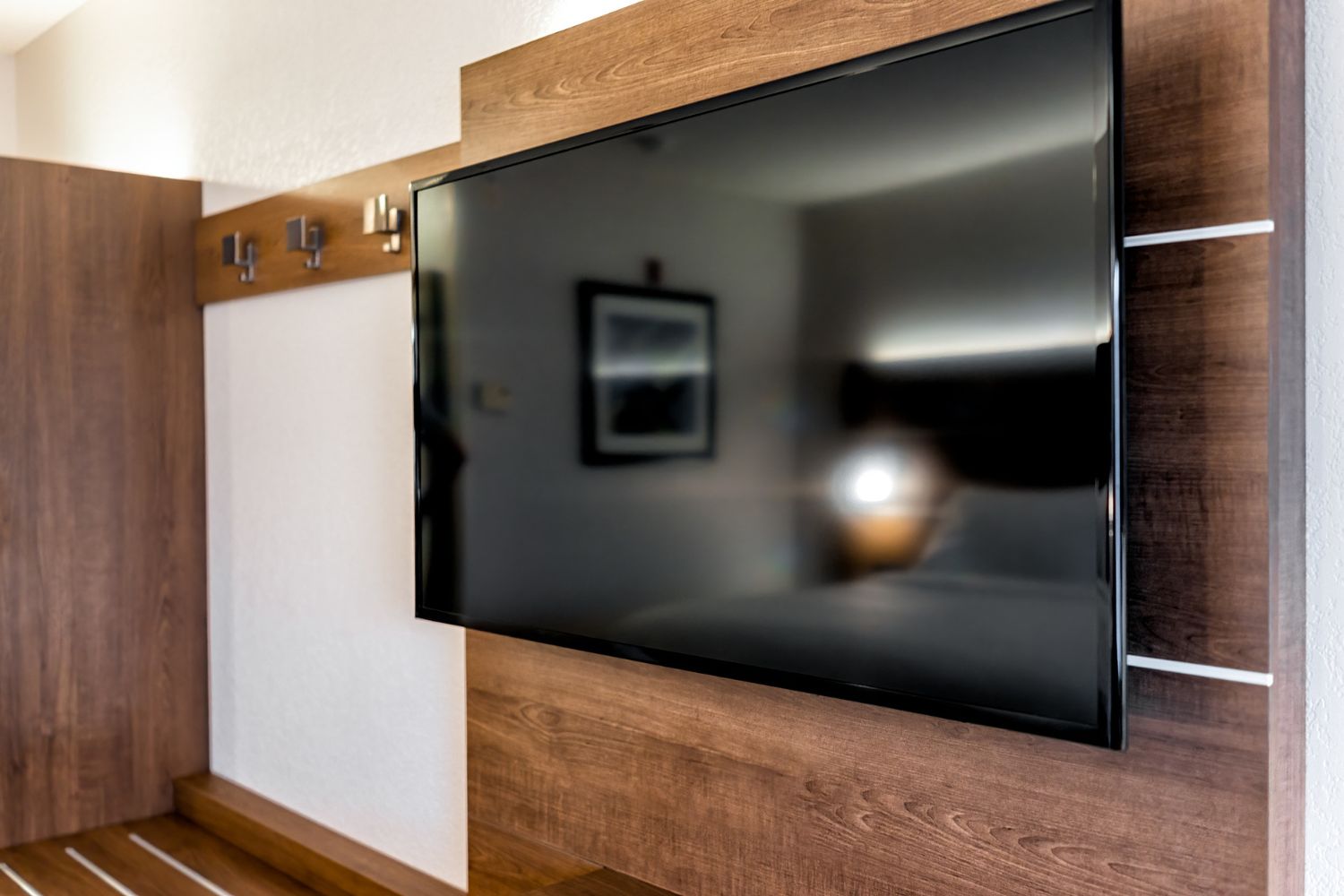In the modern era, wall-mounted TVs have become a staple in households worldwide. They offer sleek designs, space-saving solutions, and a cinematic viewing experience. However, with the convenience of mounting TVs on walls comes concerns about safety. How often do wall-mounted TVs fall? In this extensive blog post, we will explore the frequency of such incidents, the contributing factors, and strategies to prevent accidents.
Understanding the Risk: Factors Contributing to TV Falls

Wall-mounted TVs are a popular choice for homeowners seeking to maximize space and enhance their entertainment setups. However, ensuring the safety of these installations requires a thorough understanding of the risk factors that contribute to TV falls. Let’s delve deeper into these factors:
Installation Errors
Improper installation ranks among the top contributors to wall-mounted TV accidents. This encompasses a range of mistakes, including using the wrong type of mounting hardware, failing to secure the bracket adequately to the wall, or underestimating the weight capacity of the wall. Each of these errors can compromise the stability of the installation, increasing the likelihood of a TV falling.
Suboptimal Mounting Hardware:
Choosing mounting hardware that is incompatible with the wall type or insufficient for the TV’s weight can lead to failure. For instance, using bolts that are too short or anchors that are not rated for the load can result in the TV pulling away from the wall over time. Additionally, using low-quality or generic hardware may not provide the necessary strength and durability to support the TV securely.
Inadequate Wall Preparation:
Failure to properly prepare the wall surface before mounting the TV can also contribute to accidents. This includes not assessing the wall’s structural integrity, surface material, and load-bearing capacity. Without adequate preparation, the mounting hardware may not anchor securely, leading to instability and potential falls.
Misalignment and Uneven Weight Distribution:
Improper alignment of the TV bracket or uneven weight distribution can strain the mounting system and increase the risk of failure. If the bracket is not level or aligned with the studs or support structure behind the wall, it may not distribute the weight of the TV evenly. Over time, this can cause stress points and weaken the installation, making it more susceptible to failure.
Wall Type
The type of wall onto which the TV is mounted plays a significant role in its stability and safety. Different wall materials and constructions require tailored mounting techniques to ensure a secure installation.
Solid Walls:
Solid walls, such as brick or concrete, provide robust support for wall-mounted TVs. However, installing hardware directly into solid walls requires appropriate tools and techniques to ensure a secure attachment. Using the wrong type of fasteners or failing to drill into solid sections of the wall can compromise the installation’s integrity.
Stud Walls:
Stud walls, typically constructed with wooden or metal studs and covered with drywall, present a different set of challenges. Mounting a TV to a stud wall requires locating and securing the bracket to the studs for maximum stability. Failure to anchor the bracket to the studs or using inadequate fasteners can result in the TV pulling away from the wall.
Dry-lined Walls:
Dry-lined walls, also known as plasterboard or gypsum board walls, are common in modern construction. Mounting a TV to a dry-lined wall requires special considerations, as the surface may not provide sufficient support on its own. Using appropriate anchors, distributing the weight evenly, and avoiding overloading the wall are crucial for a safe installation.
Weight of the TV
![How Much Does TV Mount Installation Cost? [2024 Data] | Angi](https://media.angi.com/s3fs-public/scandinavian-living-room-tv.jpg)
The weight of the TV itself is a critical factor in determining the stability of the wall-mounted installation. TVs vary widely in size and weight, ranging from lightweight LED models to larger, heavier OLED or plasma screens. Exceeding the weight capacity of the mounting hardware or selecting a bracket unsuitable for the TV’s dimensions can strain the installation and increase the risk of failure.
Weight Capacity of the Bracket:
Every TV bracket is designed to support a maximum weight load, typically specified by the manufacturer. Exceeding this weight limit can overstress the mounting hardware and compromise its integrity. It’s essential to select a bracket with a weight capacity that exceeds the TV’s weight, accounting for any additional accessories or attachments.
Distribution of Weight:
Properly distributing the weight of the TV across the mounting system is crucial for maintaining stability. Mounting the TV off-center or placing excessive weight on one side of the bracket can create uneven stress points and weaken the installation over time. Ensuring that the TV is centered and balanced on the bracket helps minimize strain and reduces the risk of failure.
Quality of Mounting Hardware
The quality of the mounting hardware used in the installation significantly impacts its stability and durability. Using substandard or incompatible hardware compromises the integrity of the installation, increasing the risk of accidents.
Bolts and Anchors:
Choosing high-quality bolts and anchors that are appropriate for the wall type and load requirements is essential for a secure installation. Bolts should be long enough to penetrate the wall material fully, while anchors should provide reliable support without degrading over time.
Brackets and Supports:
Investing in a sturdy, well-designed TV bracket that is compatible with the TV’s size and weight is crucial for ensuring stability. Cheap or poorly constructed brackets may not provide adequate support or may fail under stress, leading to accidents. Opting for reputable brands and trusted models helps minimize the risk of hardware failure.
Environmental Factors
External environmental factors can also contribute to the risk of wall-mounted TV accidents. Vibrations from nearby traffic, structural changes in the building, or seismic activity can weaken the mounting system over time, increasing the likelihood of failure.
Vibration and Movement:
Excessive vibration or movement in the wall or mounting system can gradually loosen bolts, anchors, or brackets, compromising the installation’s stability. Locations near busy roads, train tracks, or other sources of vibration may require additional reinforcement or specialized mounting techniques to mitigate the risk of accidents.
Structural Changes:
Changes in the building’s structure, such as settling, shifting, or remodeling, can affect the integrity of the wall-mounted TV installation. Cracks or damage to the wall surface, alterations to the support structure behind the wall, or changes in load distribution can weaken the mounting system and increase the risk of failure.
Seismic Activity:
In regions prone to earthquakes or seismic activity, ensuring the stability of wall-mounted TVs is particularly important. Specialized seismic-resistant mounting hardware and installation techniques may be necessary to withstand the forces exerted during seismic events and prevent accidents.
Assessing the Frequency of TV Falls
Gaining insight into the frequency of wall-mounted TV falls involves examining various sources of information, including statistical data, common scenarios, and real-life case studies. By exploring these aspects, we can develop a clearer understanding of how often these incidents occur and the factors contributing to them.
Statistical Data
Obtaining precise statistical data on wall-mounted TV falls can be challenging due to factors such as underreporting, varying definitions of accidents, and limited centralized data collection efforts. However, certain sources provide valuable insights into the prevalence of these incidents.
- Home Safety Organizations: Organizations dedicated to promoting home safety often compile data on accidents and injuries related to household appliances, including TVs. Reports from these organizations can offer general trends and statistics on the frequency of TV falls.
- Insurance Claims: Insurance companies may track and analyze claims related to damaged or fallen TVs. These claims data provide a snapshot of real-world incidents and can help identify common causes and trends.
- Professional Installers: Professionals involved in TV installation and repair may have anecdotal evidence or insights based on their experiences. They can provide valuable perspectives on the frequency of TV falls and the factors contributing to them.
Common Scenarios
Examining common scenarios in which wall-mounted TVs fall provides additional context for understanding the frequency of these incidents. While specific circumstances may vary, several recurring scenarios illustrate the potential risks and vulnerabilities associated with wall-mounted installations.
- Improper Installation: Cases where TVs fall due to improper installation practices, such as using incorrect mounting hardware, inadequate wall preparation, or misalignment of the bracket.
- Overloading: Instances where TVs exceed the weight capacity of the mounting hardware or bracket, leading to stress and failure over time.
- Environmental Factors: Situations where external factors, such as vibrations from nearby traffic, structural changes in the building, or seismic activity, contribute to the weakening of the mounting system and subsequent falls.
- Human Error: Accidents resulting from human error, such as unintentional bumps or impacts to the TV, failure to secure the TV properly after adjustment, or misuse by household members.
Case Studies
Real-life case studies provide valuable insights into the frequency and consequences of wall-mounted TV falls. By examining specific incidents and their underlying causes, we can gain a deeper understanding of the risks involved and the importance of proper installation and maintenance.
- Case 1: Improper Installation: A wall-mounted TV falls shortly after installation due to the use of inadequate mounting hardware and failure to secure the bracket properly to the wall. The incident highlights the critical role of proper installation techniques in preventing accidents.
- Case 2: Overloading: A heavy TV exceeds the weight capacity of the bracket, leading to gradual stress and eventual failure of the mounting hardware. The case underscores the importance of selecting a bracket with sufficient weight capacity and distributing the TV’s weight evenly.
- Case 3: Environmental Factors: Vibrations from nearby construction work weaken the mounting system over time, eventually causing the TV to fall. The case demonstrates the need to consider environmental factors and take appropriate precautions to mitigate risks.
Preventing TV Falls: Best Practices
Preventing wall-mounted TV falls requires a proactive approach that encompasses proper installation, regular maintenance, and adherence to safety guidelines. By implementing the following best practices, homeowners can minimize the risk of accidents and ensure the safety and stability of their TV installations.
Professional Installation
Seeking the assistance of professional installers is one of the most effective ways to ensure the safety of wall-mounted TVs. Experienced professionals possess the expertise, tools, and knowledge necessary to assess wall conditions, select appropriate mounting hardware, and install the TV securely. Professional installation helps minimize the risk of common errors and ensures that the TV is properly aligned and anchored to the wall.
Choose Quality Mounting Hardware
Investing in high-quality mounting hardware is essential for the stability and longevity of wall-mounted TV installations. Opt for sturdy brackets, durable bolts, and reliable anchors that are appropriate for the wall type and TV size. Choose reputable brands and trusted models to ensure compatibility and reliability. Avoid cheap or generic hardware that may compromise the integrity of the installation and increase the risk of accidents.
Consider Wall Type and Weight Capacity
Before mounting a TV, carefully assess the type of wall and its weight-bearing capacity. Solid walls, stud walls, and dry-lined walls each require tailored mounting solutions to ensure a secure installation. Adhere to the weight limits specified by the bracket manufacturer and distribute the TV’s weight evenly to prevent overloading the mounting system. Select a bracket with a weight capacity that exceeds the TV’s weight to provide a margin of safety.
Perform Regular Inspections
Routine inspections of the mounting hardware and wall condition are critical for identifying potential issues before they escalate into accidents. Check for signs of loosening bolts, wall damage, or structural changes that may compromise the stability of the installation. Ensure that the bracket is securely attached to the wall and that there are no visible signs of wear or damage. Address any issues promptly to maintain the integrity of the installation and prevent accidents.
Educate Household Members

Educating household members, especially children, about the importance of TV safety and proper handling is essential for accident prevention. Emphasize the need to avoid hanging on or tampering with the TV and encourage responsible use of electronic devices. Teach children to avoid climbing or playing near the TV and to notify adults if they notice any signs of instability or damage. By fostering a culture of safety awareness, homeowners can reduce the risk of accidents and promote a safe living environment.
Stay Informed About Recalls and Updates
Stay abreast of product recalls, safety guidelines, and industry developments related to wall-mounted TVs. Manufacturers may issue updates or recalls to address potential safety hazards, such as faulty mounting hardware or design flaws. Regularly check for updates from the manufacturer and follow any recommended safety procedures or modifications. By staying informed and proactive, homeowners can take timely action to address any concerns and ensure the continued safety of their TV installations.
Conclusion
While incidents of wall-mounted TVs falling are not uncommon, they are largely preventable through diligent installation, maintenance, and adherence to safety guidelines. By understanding the risk factors, assessing the frequency of accidents, and implementing best practices for prevention, homeowners can enjoy the convenience and aesthetics of wall-mounted TVs with confidence in their safety. Remember, prioritizing safety today ensures peace of mind and avoids costly accidents tomorrow.

